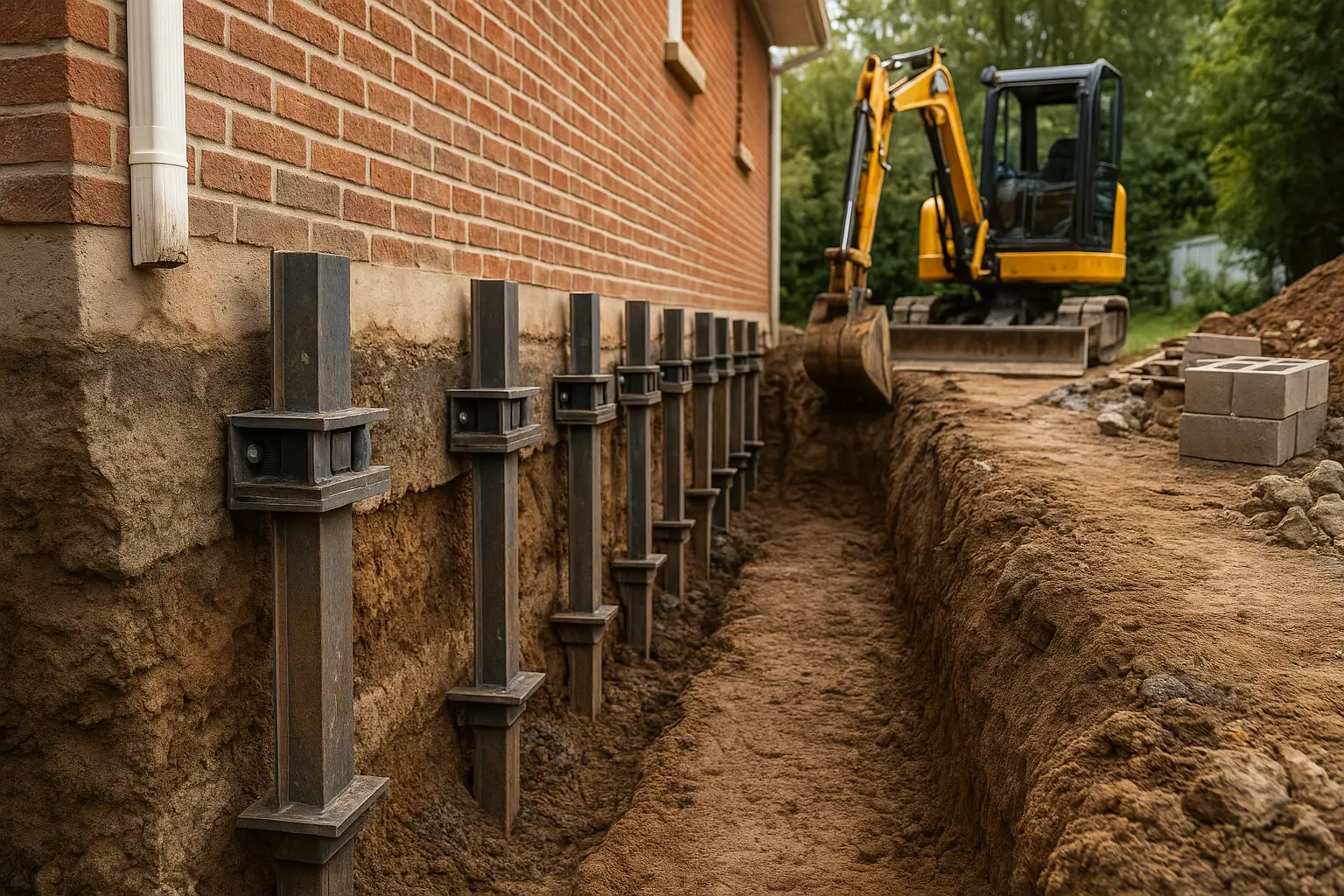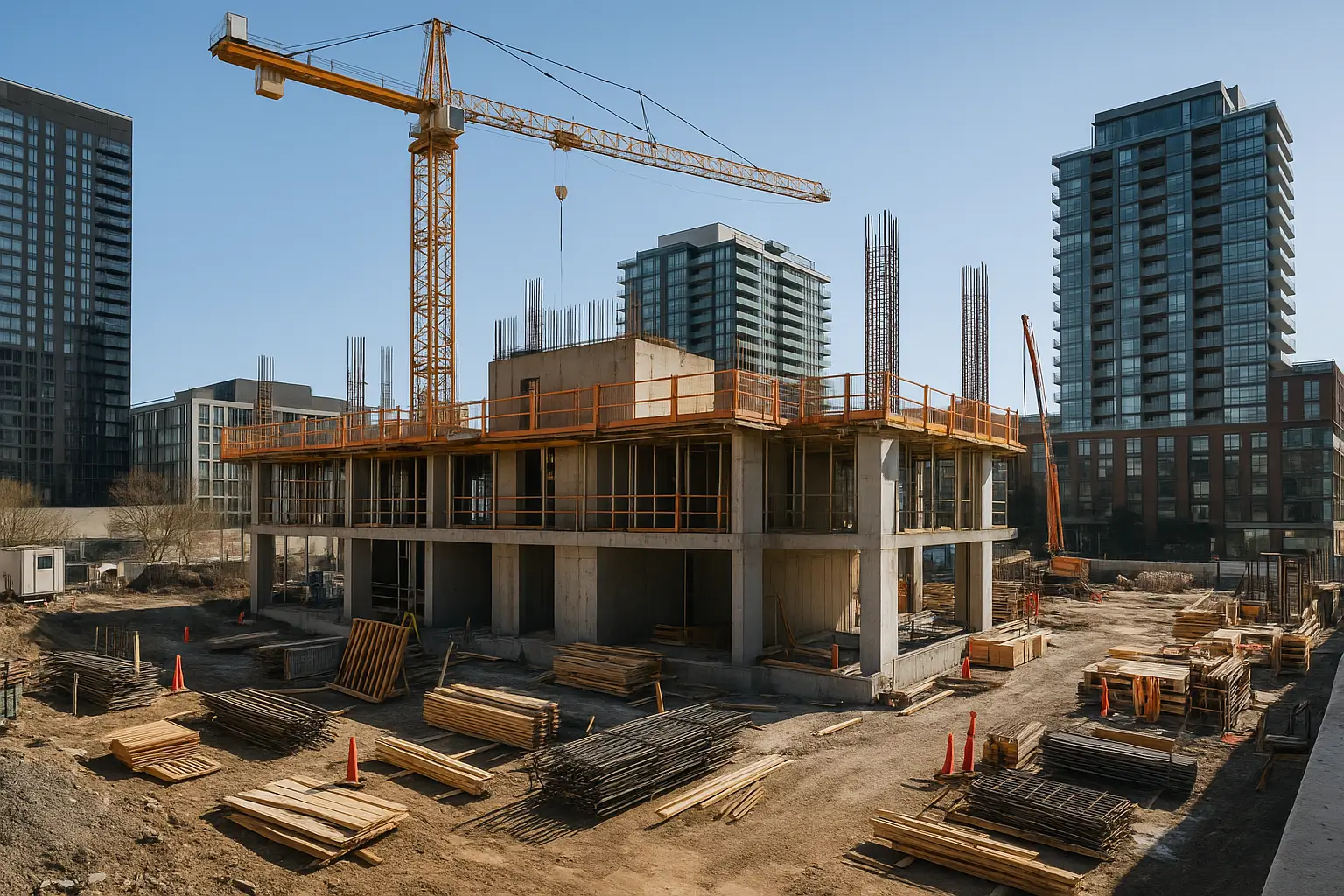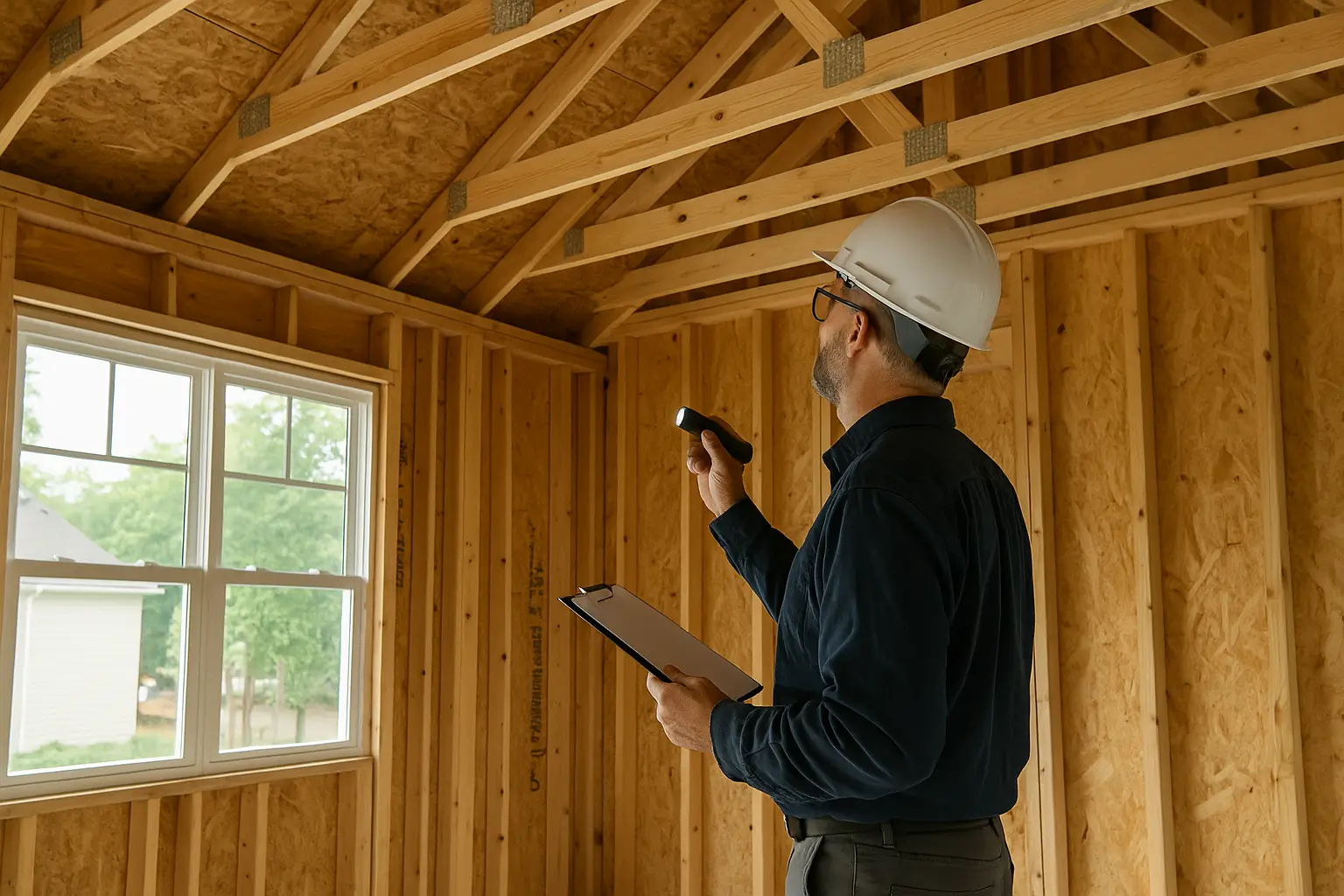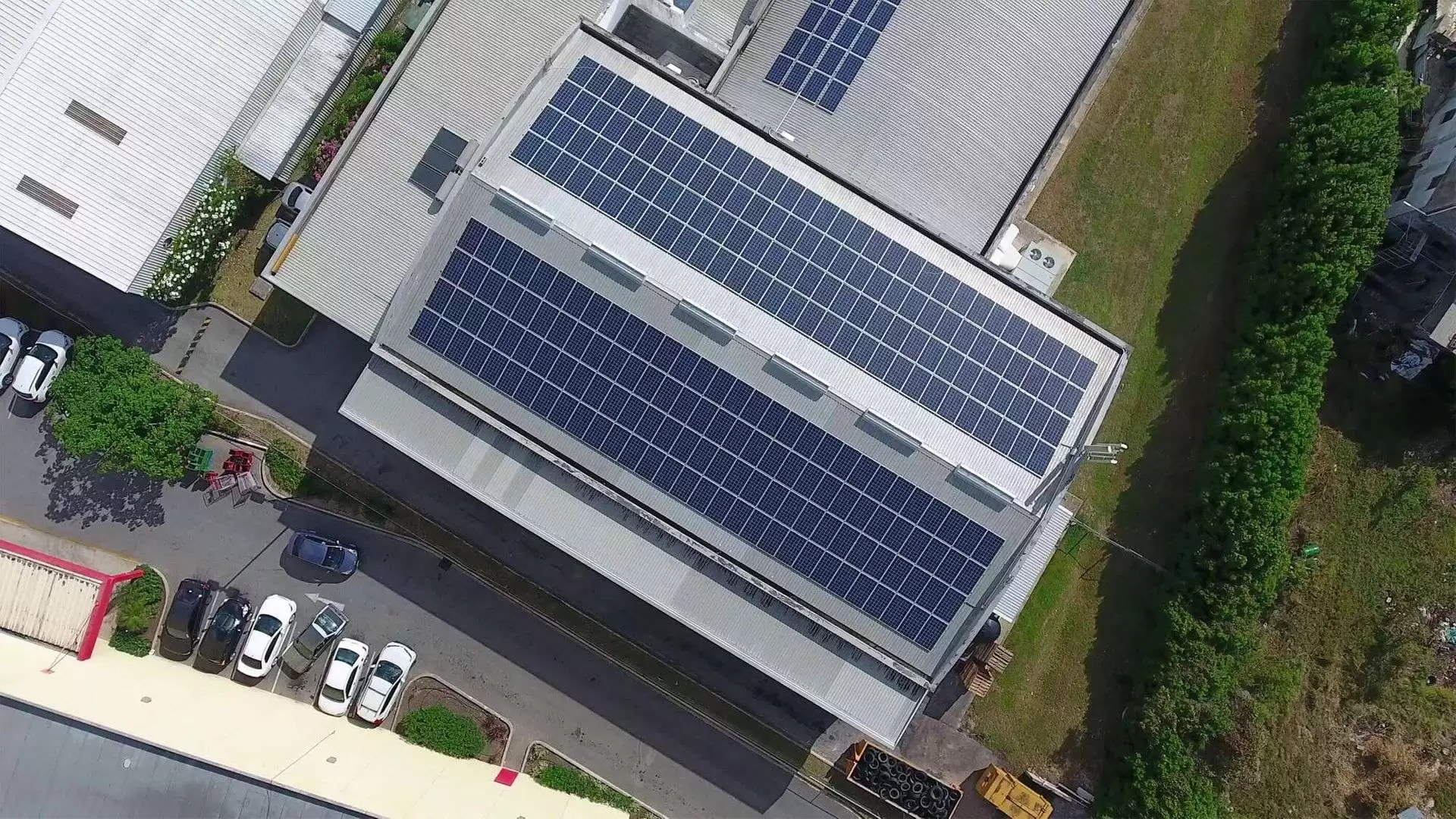The Role of Technology in Sustainable Construction
As the global community grapples with the pressing challenges posed by climate change, the role of technology in sustainable construction has never been more critical. Civil engineering stands at the forefront of this transition, with innovative solutions paving the way for greener building practices. Embracing sustainable technology not only addresses environmental concerns but also enhances the efficiency and longevity of construction projects.

Key Components of Sustainable Building Systems
Sustainable building systems encompass a variety of components that work synergistically to reduce the environmental footprint of construction projects. These systems prioritize the use of renewable resources, energy efficiency, and waste reduction. By integrating smart technologies, civil engineering in toronto can optimize energy consumption, thereby minimizing greenhouse gas emissions throughout the building’s lifecycle. Moreover, sustainable materials, such as recycled steel and bamboo, contribute to reducing the carbon footprint of new construction, making them essential in the quest for a sustainable future.
Incorporating advanced technologies into sustainable building systems also involves the use of building information modeling (BIM) and automated construction management systems. These tools facilitate precise planning and execution, allowing civil engineers to identify potential issues early on and streamline workflows. Furthermore, the adoption of energy-efficient systems, such as solar panels and green roofs, enhances the overall sustainability of buildings. By focusing on these key components, the construction industry can significantly mitigate its impact on the environment and foster sustainable communities.
How Can Civil Engineering Embrace Sustainability?
Civil engineering can embrace sustainability through the integration of innovative design principles and sustainable construction practices. By prioritizing environmentally friendly materials and techniques, engineers can significantly reduce the environmental impact of their projects. Moreover, the incorporation of energy-efficient systems can lead to a substantial decrease in energy consumption and greenhouse gas emissions. This shift not only benefits the environment but also aligns with the growing demand for sustainable infrastructure in urban planning.
Collaboration among stakeholders in the construction industry is crucial for successfully implementing sustainable practices. Civil engineers must work closely with architects, contractors, and policymakers to establish guidelines that promote sustainability. This collective effort can result in the development of green building certifications, which encourage the adoption of sustainable technologies and practices. By fostering a culture of sustainability within the industry, civil engineering can play a pivotal role in combating climate change and promoting a greener future.
Strategies for Embracing Sustainable Construction Practices
To effectively embrace sustainable construction practices, civil engineers can implement several strategies that prioritize environmental stewardship. First, conducting thorough assessments of materials and methods can help identify opportunities for reducing waste and improving energy efficiency. This proactive approach allows engineers to select sustainable materials that have a lower environmental footprint while also optimizing construction processes. Additionally, integrating renewable energy sources, such as wind and solar power, into building designs can significantly enhance sustainability efforts.
Another strategy involves leveraging technology to monitor and manage resource consumption throughout the construction process. By utilizing smart technologies and data analytics, engineers can track energy usage, water consumption, and waste generation in real-time. This information enables them to make informed decisions that promote sustainability and reduce the overall environmental impact of construction projects. Furthermore, ongoing training and education for civil engineers on sustainable practices are essential for fostering a culture of sustainability within the industry.
Challenges in Adopting Sustainable Technologies
Despite the numerous benefits of adopting sustainable technologies, the construction industry faces several challenges that can hinder progress. One significant challenge is the initial cost associated with implementing green building practices and technologies. While these investments often lead to long-term savings in energy consumption and maintenance, the upfront expenses can deter stakeholders from pursuing sustainable options. Additionally, the lack of standardized regulations and guidelines for sustainable construction can create uncertainty and confusion among civil engineers and contractors.
Moreover, the construction industry’s traditional practices and resistance to change can pose barriers to the adoption of new technologies. Many professionals may be hesitant to embrace innovative solutions due to concerns about their effectiveness or the potential disruption to established workflows. Overcoming these challenges requires a concerted effort from all stakeholders, including government entities, industry associations, and educational institutions, to promote awareness and provide support for sustainable initiatives. By addressing these obstacles, the construction industry can move closer to a more sustainable future.
The Importance of Sustainable Development in Engineering
Sustainable development is essential in engineering, particularly in civil engineering, as it addresses the need for responsible resource management and environmental protection. By prioritizing sustainability, civil engineers can create infrastructure that meets the needs of the present without compromising the ability of future generations to meet their own needs. This approach not only enhances the quality of life for communities but also contributes to the global effort to combat climate change and reduce greenhouse gas emissions.
Furthermore, integrating sustainable development principles into engineering practices fosters innovation and encourages the exploration of new technologies and materials. As civil engineers embrace sustainability, they can develop solutions that minimize the environmental impact of construction projects while maximizing efficiency and resilience. Ultimately, the importance of sustainable development in engineering extends beyond individual projects; it shapes the future of urban planning and infrastructure development, paving the way for sustainable communities that thrive in harmony with the environment.
The Benefits of Green Building
Green building offers numerous benefits that extend beyond environmental considerations, making it an attractive option for stakeholders in the construction industry. One of the most significant advantages is the reduction of the environmental impact associated with construction projects. By utilizing sustainable materials and practices, green buildings can significantly decrease energy consumption, lower greenhouse gas emissions, and minimize waste generation. This not only benefits the planet but also enhances the quality of life for occupants and surrounding communities.
In addition to environmental benefits, green building can lead to substantial economic advantages. Sustainable construction practices often result in lower operational costs due to improved energy efficiency and reduced resource consumption. Moreover, green buildings can attract higher property values and rental rates, making them a smart investment for developers and investors. As public awareness of sustainability grows, the demand for green building projects continues to rise, further emphasizing the economic viability of sustainable construction practices.
Environmental Impact of Green Construction
The environmental impact of green construction is significantly less than that of traditional building practices, primarily due to the emphasis on resource efficiency and sustainable materials. By prioritizing renewable resources and minimizing waste, green construction practices contribute to a reduction in the overall environmental footprint of civil engineering projects. This approach not only conserves natural resources but also helps mitigate the effects of climate change by lowering greenhouse gas emissions associated with construction activities.
Furthermore, green construction promotes biodiversity and enhances the surrounding ecosystem by incorporating natural elements and sustainable landscaping practices. For instance, the use of permeable surfaces and green roofs can help manage stormwater runoff and improve air quality. By focusing on the environmental impact of their projects, civil engineers can create structures that harmonize with the natural environment and contribute to the overall well-being of communities.
Economic Advantages of Sustainable Construction
The economic advantages of sustainable construction are manifold, making it a viable option for investors and developers alike. First and foremost, green buildings often lead to significant cost savings through reduced energy consumption and lower utility bills. By incorporating energy-efficient technologies and sustainable materials, these structures can minimize operational expenses while maximizing returns on investment. Additionally, many governments offer incentives and tax breaks for sustainable construction projects, further enhancing their economic appeal.
Moreover, sustainable construction practices can increase property value and attract higher rental rates. As the demand for environmentally friendly buildings continues to rise, investors are recognizing the potential for long-term profitability in green construction. Furthermore, sustainable buildings often require less maintenance and have longer lifespans, resulting in lower overall lifecycle costs. By prioritizing sustainability, the construction industry can create economic opportunities while contributing to a greener future.
Social Benefits of Embracing Green Technology
Embracing green technology in construction not only yields environmental and economic benefits but also fosters significant social advantages. Sustainable building practices contribute to improved health and well-being for occupants by enhancing indoor air quality and promoting natural light. These factors can lead to increased productivity and reduced absenteeism in workplaces, ultimately benefiting businesses and communities alike. Furthermore, green buildings often incorporate communal spaces and promote social interaction, fostering a sense of community among residents.
Additionally, the adoption of sustainable technologies can create job opportunities in the construction industry. As the demand for green building practices grows, so does the need for skilled professionals who can implement innovative solutions. This shift not only supports economic growth but also encourages the development of a workforce that is knowledgeable about sustainability and environmental stewardship. By embracing green technology, the construction industry can contribute to the creation of sustainable communities that prioritize the well-being of their residents.
Climate Change Affecting Civil Engineering Projects
Climate change poses significant challenges to civil engineering projects, necessitating a reevaluation of traditional practices and approaches. Rising temperatures, increased frequency of extreme weather events, and shifting precipitation patterns can adversely affect the durability and performance of infrastructure. As a result, civil engineers must adapt their designs and construction practices to account for these changing conditions, ensuring that structures remain resilient in the face of climate-related challenges.
Moreover, the impact of climate change on construction practices extends to resource availability and project timelines. For instance, extreme weather can delay construction schedules, leading to increased costs and potential disruptions. Additionally, the availability of certain materials may be affected by changing environmental conditions, necessitating the exploration of alternative resources. By acknowledging the impact of climate change on civil engineering projects, the industry can develop strategies that prioritize resilience and sustainability, ultimately contributing to a greener future.
Impact of Climate Change on Construction Practices
The impact of climate change on construction practices is profound, necessitating a shift in how civil engineers approach their projects. As weather patterns become increasingly unpredictable, construction schedules may face delays due to extreme weather events, such as heavy rainfall or hurricanes. These disruptions can lead to increased costs and resource wastage, highlighting the need for adaptive strategies that prioritize resilience and sustainability in construction practices.
Furthermore, climate change can affect the availability and quality of construction materials. For example, rising temperatures may impact the production of concrete, while changes in precipitation patterns can influence the sourcing of water for construction processes. Civil engineers must be proactive in identifying alternative materials and methods that can withstand the effects of climate change, ensuring that their projects remain viable and sustainable. By addressing the impact of climate change on construction practices, the industry can contribute to a more resilient and sustainable future.
Innovative Solutions for Combatting Climate Change in Engineering
Innovative solutions for combating climate change in engineering are essential for ensuring the sustainability of future construction projects. Civil engineers are increasingly turning to advanced technologies, such as artificial intelligence and machine learning, to optimize resource management and enhance project efficiency. These tools can help identify potential risks associated with climate change, enabling engineers to develop proactive strategies that mitigate environmental impact and promote resilience.
Additionally, the integration of sustainable materials and construction practices is crucial for addressing climate change. For instance, utilizing recycled materials and incorporating energy-efficient systems can significantly reduce the carbon footprint of construction projects. Moreover, the adoption of green technologies, such as solar panels and wind turbines, can help offset greenhouse gas emissions and promote a sustainable energy future. By embracing innovative solutions, civil engineers can play a vital role in combatting climate change and fostering a greener future.
Future of Civil Engineering in a Changing Climate
The future of civil engineering in a changing climate hinges on the industry’s ability to adapt and innovate in response to environmental challenges. As climate change continues to impact construction practices, civil engineers must prioritize sustainable design principles and embrace new technologies that promote resilience and efficiency. This shift will require ongoing education and collaboration among stakeholders to ensure that best practices are shared and implemented across the industry.
Moreover, the future of civil engineering will likely see an increased focus on sustainable infrastructure that prioritizes the needs of communities while minimizing environmental impact. This may include the development of green transportation systems, energy-efficient buildings, and resilient urban planning initiatives. By proactively addressing the challenges posed by climate change, civil engineers can contribute to the creation of sustainable communities that thrive in harmony with their environment, ultimately shaping a greener future for generations to come.
Latest Trends in Sustainable Construction Technology
The latest trends in sustainable construction technology reflect a growing commitment to environmental stewardship and resource efficiency within the industry. One notable trend is the increasing use of modular construction techniques, which allow for faster assembly and reduced waste. By prefabricating building components off-site, construction projects can minimize their environmental footprint while maintaining high-quality standards. Additionally, advancements in 3D printing technology are enabling the creation of sustainable structures with reduced material waste and energy consumption.
Another emerging trend is the integration of smart building technologies that enhance energy efficiency and occupant comfort. These systems utilize sensors and automation to optimize energy consumption, monitor indoor air quality, and manage resources effectively. As the demand for sustainable buildings continues to rise, civil engineers are increasingly incorporating these technologies into their designs, ensuring that new construction projects align with sustainability goals. By staying abreast of the latest trends in sustainable construction technology, the industry can continue to innovate and contribute to a greener future.
Emerging Technologies for Green Building
Emerging technologies for green building are revolutionizing the construction industry, providing civil engineers with innovative tools to enhance sustainability. One such technology is the use of advanced materials, such as self-healing concrete and energy-efficient insulation, which improve the durability and energy performance of buildings. These materials not only reduce the environmental impact of construction but also contribute to the longevity of structures, minimizing the need for repairs and replacements.
Additionally, the adoption of renewable energy technologies, such as solar panels and geothermal systems, is becoming increasingly prevalent in green building practices. These systems enable buildings to generate their own energy, significantly reducing reliance on fossil fuels and lowering greenhouse gas emissions. As civil engineers continue to explore and implement these emerging technologies, they play a vital role in shaping a sustainable future for the construction industry and the communities it serves.
How to Optimize Construction Projects for Sustainability
Optimizing construction projects for sustainability requires a strategic approach that prioritizes resource efficiency and environmental stewardship. Civil engineers can begin by conducting thorough assessments of materials and methods to identify opportunities for reducing waste and improving energy efficiency. This proactive approach allows for the selection of sustainable materials and techniques that minimize the environmental impact of construction projects while maximizing their overall performance.
Moreover, integrating smart technologies and data analytics can enhance project management and resource allocation. By monitoring energy consumption, water usage, and waste generation in real-time, engineers can make informed decisions that promote sustainability throughout the construction process. Additionally, fostering collaboration among stakeholders in the construction industry is essential for sharing best practices and promoting the adoption of sustainable technologies. By optimizing construction projects for sustainability, the industry can contribute to a greener future and support the development of sustainable communities.
What is the Future of Civil Engineering in Sustainability?
The future of civil engineering in sustainability is poised for transformation as the industry adapts to the challenges posed by climate change and resource scarcity. Civil engineers will increasingly prioritize sustainable design principles, integrating innovative technologies and materials that minimize environmental impact. This shift will not only enhance the resilience of infrastructure but also promote the development of sustainable communities that thrive in harmony with their surroundings.
As the demand for sustainable infrastructure continues to grow, civil engineers will play a pivotal role in shaping urban planning and development. By embracing sustainable practices, they can contribute to the creation of green transportation systems, energy-efficient buildings, and resilient public spaces. The future of civil engineering will be characterized by a commitment to sustainability, innovation, and collaboration, ultimately paving the way for a greener future for generations to come.
Predictions for Sustainable Infrastructure Development
Predictions for sustainable infrastructure development indicate a significant shift toward environmentally responsible practices in civil engineering. As awareness of climate change and its impacts grows, stakeholders in the construction industry are increasingly recognizing the importance of sustainability. This trend is expected to drive the adoption of innovative technologies and materials, resulting in infrastructure that minimizes environmental impact while maximizing efficiency and resilience.
Furthermore, the integration of smart technologies and data analytics will play a crucial role in optimizing infrastructure performance. By leveraging real-time data on energy consumption, resource usage, and environmental conditions, civil engineers can make informed decisions that promote sustainability throughout the lifecycle of infrastructure projects. As the industry continues to evolve, the focus on sustainable infrastructure development will shape the future of civil engineering, fostering resilient communities that prioritize environmental stewardship.
The Evolving Role of Civil Engineers in a Greener Future
The evolving role of civil engineers in a greener future is marked by a shift toward sustainability and environmental responsibility. As the construction industry faces increasing pressure to reduce its environmental impact, civil engineers are becoming key players in the development of sustainable infrastructure. This transformation involves not only the adoption of innovative technologies and materials but also a commitment to collaboration and knowledge-sharing among stakeholders in the construction industry.
Moreover, civil engineers will need to adapt their skill sets to include expertise in sustainable design principles and practices. This may involve ongoing education and training to stay abreast of emerging trends and technologies in sustainable construction. By embracing their evolving role, civil engineers can contribute to the creation of resilient communities that prioritize sustainability and environmental stewardship, ultimately shaping a greener future for all.
Building the Future: Integrating Sustainability into Civil Engineering
Building the future requires a concerted effort to integrate sustainability into civil engineering practices. This involves not only the adoption of innovative technologies and materials but also a commitment to sustainable design principles that prioritize environmental stewardship. Civil engineers must collaborate with architects, contractors, and policymakers to establish guidelines that promote sustainable construction practices and ensure that new infrastructure aligns with sustainability goals.
Furthermore, integrating sustainability into civil engineering involves a holistic approach that considers the entire lifecycle of a project. This includes assessing the environmental impact of materials, energy consumption, and waste generation throughout the construction process. By prioritizing sustainability in their designs and practices, civil engineers can contribute to the development of resilient infrastructure that meets the needs of communities while minimizing environmental impact. Building the future requires a commitment to sustainability, innovation, and collaboration, ultimately paving the way for a greener tomorrow.
How Construction Industry Can Overcome These Challenges
Overcoming the challenges associated with sustainable construction requires a multifaceted approach that involves collaboration, education, and innovation. The construction industry must prioritize the development of standardized regulations and guidelines that promote sustainable practices and technologies. By establishing clear benchmarks for sustainability, stakeholders can work together to create a framework that supports the adoption of green building practices.
Additionally, ongoing education and training for professionals in the construction industry are essential for fostering a culture of sustainability. By equipping civil engineers and contractors with the knowledge and skills needed to implement sustainable practices, the industry can drive meaningful change. Moreover, leveraging innovative technologies and data analytics can enhance project management and resource allocation, ultimately promoting sustainability throughout the construction process. By addressing these challenges head-on, the construction industry can pave the way for a greener future.
Q: What is the role of technology in sustainable construction practices?
A: Technology plays a pivotal role in sustainable construction practices by enabling civil engineers to optimize resources, reduce waste, and enhance energy efficiency in building projects. It allows for the integration of innovative materials and systems that minimize the environmental impact of construction.
Q: How can civil engineering contribute to a sustainable future?
A: Civil engineering can contribute to a sustainable future by adopting sustainable construction practices that reduce the carbon footprint of projects. This includes utilizing green building materials, implementing energy-efficient systems, and designing infrastructure that supports sustainable communities.
Q: What are some benefits of sustainable construction in civil engineering?
A: The benefits of sustainable construction in civil engineering include reduced greenhouse gas emissions, lower energy consumption, improved indoor air quality, and decreased environmental footprint. Additionally, sustainable buildings often have lower operational costs and increased market value.
Q: What does embracing green technology mean for civil engineering projects?
A: Embracing green technology in civil engineering projects means integrating advanced systems and materials that promote sustainability. This includes using renewable energy sources, efficient waste management systems, and environmentally friendly construction practices to mitigate the impact of construction on the environment.
Q: How does the construction industry address climate change through sustainable practices?
A: The construction industry addresses climate change through sustainable practices by reducing emissions associated with construction activities, utilizing sustainable materials, and implementing energy-efficient designs. This proactive approach helps combat climate change and fosters a greener future.
Q: What is the impact of construction on the environment, and how can it be mitigated?
A: The impact of construction on the environment includes habitat destruction, increased carbon emissions, and resource depletion. This can be mitigated by adopting sustainable construction practices, such as using eco-friendly materials, optimizing energy consumption, and minimizing waste through recycling and reuse.
Q: In what ways can sustainable construction technology optimize building practices?
A: Sustainable construction technology can optimize building practices by enhancing energy efficiency, reducing material waste, and improving project management. Innovations such as Building Information Modeling (BIM) and prefabrication techniques allow for better planning and execution of civil engineering projects.
Q: What are the key components of green building in civil engineering?
A: Key components of green building in civil engineering include energy efficiency, water conservation, sustainable site development, and the use of non-toxic materials. These elements work together to create structures that have a minimal environmental impact and promote the health and well-being of occupants.
Q: How can civil engineers promote sustainable communities through their projects?
A: Civil engineers can promote sustainable communities by designing infrastructure that supports public transportation, green spaces, and energy-efficient buildings. By focusing on the integration of sustainable practices in their projects, they can help create resilient and thriving environments for future generations.

















